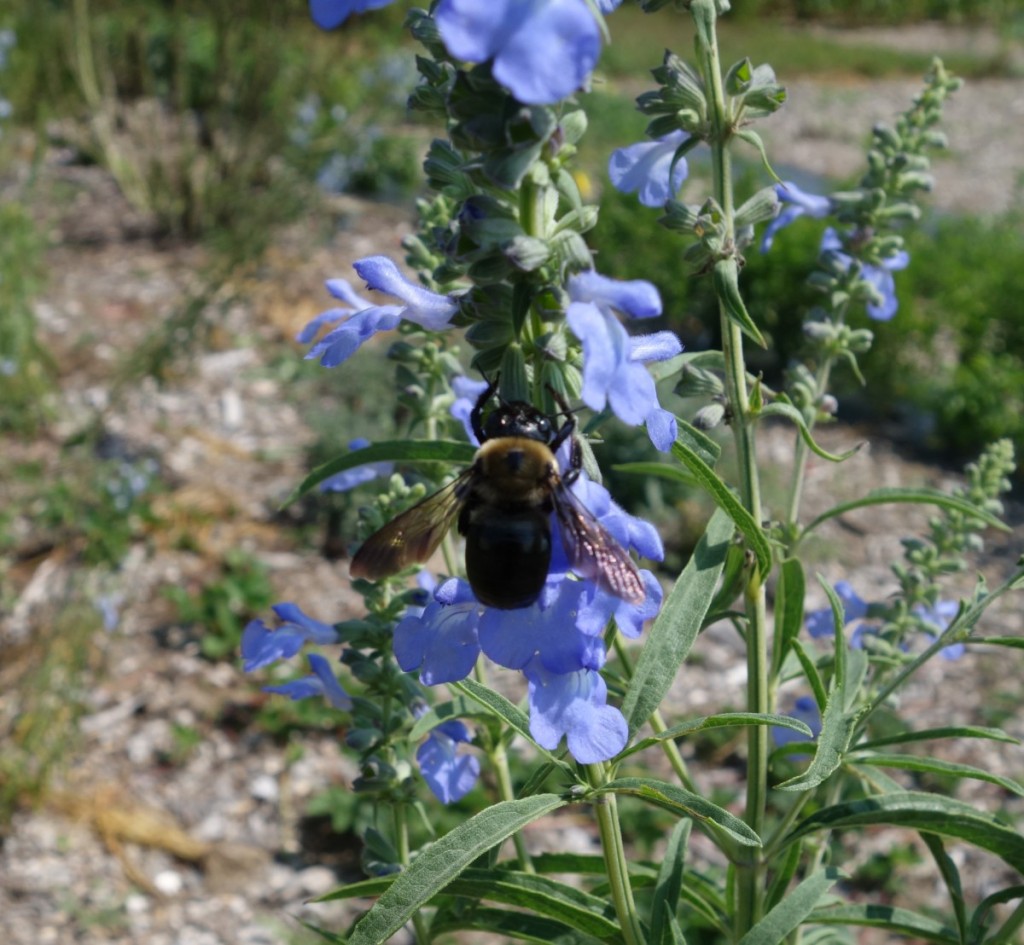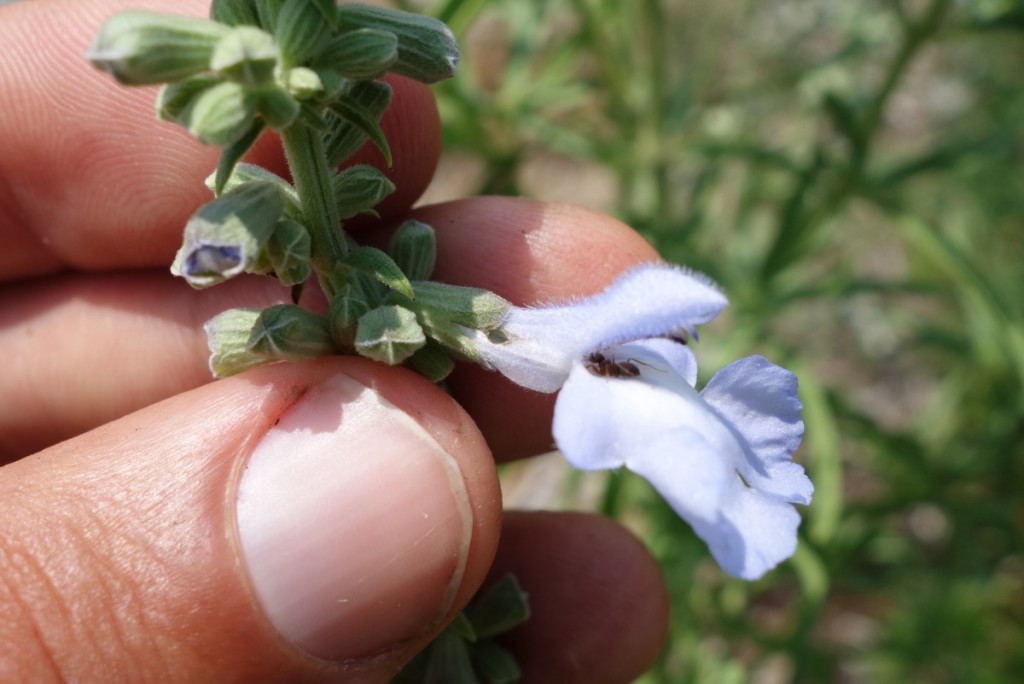Salvia azurea (maybe my favorite salvia in the world — sky blue flowers in late summer/fall, hardy to zone 5) is blooming in the garden, and the bees are all over the flowers. But while some are poking their heads into the flowers to drink nectar and transferring pollen as they do so, others are up to something more sinister.

The evidence of what they are up to is clear if you look closely at the side of the flowers after they leave.

See the little hole in the base of the flower? That is where the carpenter bee bit a hole in the flower to get access to the nectar instead of going in the front of the flower as one would expect.
This phenomenon is called nectar robbing because it is an evolutionary betrayal of sorts. Flowers have evolved nectar to lure bees and other pollinators into the flower, so the bees will pollinate while getting their sugar fix. When the bees nectar rob, they’re getting the payment without doing the actual pollinating.
So why bite a hole in the side of the flower instead of just going in the front? Well, many flowers have evolved flower forms that make the nectar hard to reach by anything but their preferred pollinator, the species that most effectively moves pollen from plant to plant. In the case of this salvia, the nectar is down at the base of the flower, and only accessible to bees with long tongues, like whatever species normally pollinates it in its native range in the US plains. In other words, it is out of reach of the carpenter bees to save it for another bee, probably a bumble bee. Which works great to avoid wasting nectar on sub-optimal pollinators… unless, of course, those bees become robbers.
So next time you see bees on your flowers, take a look… they might just be robbers, not pollinators.
Three the apples on one of my trees had big holes in them. I picked them off and discovered a single brown bee like creature. in two of the three holes. They buzzed off.
They were about the length of a honey bee but with more girth and a dark brown color. If you don’t mind would you please answer any or all the following questions.
Where they bees?
If so, what sort of bees?
Is there anything I can do to protect my remaining. (I only got 15 apples this year on three trees. So every apple lost is significant.)
Thanks for any assistance.